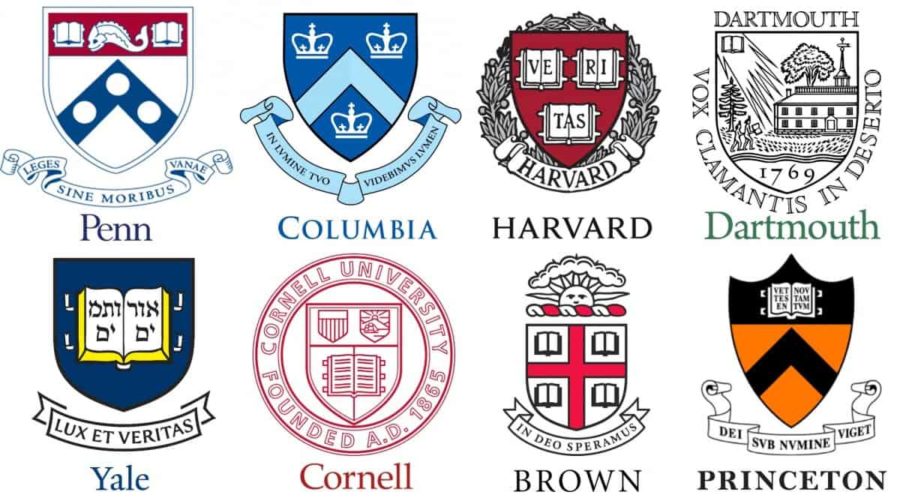The Golden Ticket: College, Elites, and the Myth of Upward Mobility
At a time when economic inequity is outpacing our growth, it’s time to confront the supposed “great equalizer.”
University – a summation of who I was, my pitch for why they should offer me the golden ticket
to their institution. Years of sleepless nights studying for the SAT, cramming in extracurricular
work, and perfecting each and every word of my Personal Statement led up to this moment. And
with a 2-second confetti animation, and a large “Congratulations” to compliment it, that moment
was over.
For many Americans across the nation, including myself, that day of reckoning, and the drive to
even apply in the first place, is part of a widespread myth that we believe – that a “golden ticket”
to an elite university is the key to upward mobility.
Today, high-paying positions at America’s top consulting, law, and tech firms are open to only a
small subset of college graduates. Facebook hires more than 80% of its employees from elite
universities. The same goes for Google. A recent study by Indeed, the top job site worldwide,
found that 29% of managers preferred only hiring from top institutions, while 48% said the
name on an employer’s degree”.
The perception of security that comes with winning one of those job positions, and the
subsequent scramble to move up the socioeconomic totem pole, has led to what The Washington
Post in 2017 calls “Ivy League mania”.
To put it simply, Americans believe that the course of their life (and their family’s) can be
defined by a single acceptance letter. The reality behind that assumption, though, is nothing more
than a myth – the degree of our success outcome starts far before an application.
Funding, particularly in America’s public schools, lays the groundwork for our story. Depending
on the amount of money spent per child in a given school district, students are afforded varying
degrees of educational and extracurricular opportunities – today, however, there is widespread
inequity in the distribution of funds.
According to the Education Law Center’s 2021 “Making the Grade” report, “Per-student
spending ranges widely from state to state and varies considerably from year to year, depending
on property values, tax revenues, budgetary constraints, and political conditions.” In low-income
districts, where property values and tax revenues are lower, for example, schools in those
districts get less funding.
In Chicago’s Ridge School District, where ⅔ of students come from low-income families,
spending per student is $9,794. In Chicago’s Rondout School District, located in an affluent
suburb less than an hour north, per student spending sits at a whopping $28,639. While the state
of Illinois gives more money to Ridge than Rondout through Title I funding, the playing field is
hardly equalized.
While Hawai’i is the only state to not use property taxes as a source of funding for public
schools, inequity still exists and persists. Hawai’i currently spends $11,822 per student in its sole
district, which, on face value, is similar to the national average. However, Ray L’Heureux,
chairman and president of the Education Institute of Hawai’i, asserts that analyzing the funding
amount this way is misleading – a fairer comparison would look at school districts with similar
high costs of living. When Hawai’i is pinned up against New York City’s $24,100 and
Washington D.C.’s $19,150, there is a glaring gap in the allocation of our resources.
When our funding is inequitable, moreover, student achievement outcomes are inequitable. A
2019 study conducted by the Center for American Progress found that increased spending on
students – who typically don’t have access to core services like childhood education, quality
teachers, and exposure to rigorous curriculum.
Even the 3.4 million low-income K-12 children ranking in the top quartile academically,
according to the Jack Kent Cooke Foundation, “lose more educational ground and excel less
frequently than their higher-income peers,” a gap created by inequitable funding distribution.
As students progress toward a college education, low-income students tend to find themselves in
community colleges and regional public universities with lower success rates, as opposed to the
high-income students attending elite private and flagship public campuses. Lavishly equipped
universities like Yale, Brown, Columbia, Georgetown, and Stanford have roughly 15% of their
student body made up of low-income students, further showcasing the long-lasting, reverberating
impact of a dollar sign.
The American education system is constructed in a way where our zip code matters more than
the rare spark of academic ambition. From the very beginning, students are hindered from even
the chance to apply to an Ivy League school, let alone get into one. An acceptance, then, can
hardly be the great equalizer when the road to acceptance is unequal.
Where the Grass is Greener
Two years have passed since Rick Singer made headlines for weaseling the children of elites into
the nation’s most prestigious institutions. From helping students cheat on the SAT and ACT (for
a price tag of $75,000) to manufacturing athletic careers, Singer ran a company that provided
America’s wealthy with the surefire security of an Ivy League acceptance.
One would think that the rich and powerful would care less about the name on their child’s
degree, given that they’d have financial security no matter their collegiate destination. But,
according to Daniel Golden, the Pulitzer Prize-winning author of “The Price of Admission: How
America’s Ruling Class Buys Its Way into Elite Colleges – and Who Gets Left Outside the
Gates”, it’s part of an upper-class culture – boasting about generations of Harvard alumna and
their successful imprimatur at “Hollywood cocktail parties.”
The “golden ticket” to an elite university, no less, isn’t a gateway to upward mobility – it’s an
indicator of status, the key to an upper-class culture of nepotism and power.
It’s no wonder, then, that wealthy (and even middle-class) parents scramble to enhance their
child’s standardized testing scores with test prep and tutoring; levy business connections for
For that last point, the differences in culture are stark – put simply by Sterling Higa’s Civil Beat
Community Voice, “At schools like Punahou and Iolani, the question isn’t whether students will
attend college. The question is which college they will attend.”
For high school juniors and seniors standing in the long shadow of the admissions process, the
perception of prestige imprinted by the elite can be damaging as well, causing tens of thousands
of students across the nation to scramble for a few spots at an elite university. For Kamehameha
Schools senior Logan Lau, this has become an overwhelming fear to grapple with. “Competition
for gaining acceptance to elite universities is exponentially increasing,” he said. “I perpetually
feel the stress and intensity of the need to be exceptional.”
Because of this, students have sacrificed the high school experience in favor of committing
countless hours to AP courses, SAT prep, and extracurricular activities. “Sometimes, it’s too
much to just be a kid,” said Lau.
From Behind the Gates
For the small percent of low-income students accepted into some of America’s most prestigious
universities, a tall barrier still stands between them and matriculation – the cost of attendance.
In a report by CNBC in 2021, the likelihood of high school students to attend a four-year school
“sank nearly 20% in the last eight months – down to 53% from 71%.” With tuition and fees plus
room and board for a four-year private college averaging roughly $50,770 in the 2020-21 school
year, the cost of college has quickly outpaced family income and inflation, leading to this drop.
The Princeton Review’s 2021 College Hopes & Worries survey furthers this, finding that
students and parents now say affordability and dealing with college debt is their top concern,
with 98% of families saying financial aid would be necessary to pay for their collegiate
education.
Kaila Labra, a Kamehameha Schools senior who has aspirations of applying to New York
University, one of the nation’s flagship public universities, is frustrated with the high price tag
associated with college. “The cycle doesn’t make sense in America,” she says. “In order to be
rich, you need to get a good education; but in order to get a good education, you need to be rich.”
Even for students who receive considerable amounts of financial aid, moreover, the reality of
lower incomes creates inequality in college experiences. In a piece by Harvard professor
chart during school breaks, where he’d have to stay on campus (when food wasn’t served)
because he couldn’t afford to return home. Forced to balance schoolwork with four jobs and the
duty of sending remittances back home, Jack’s undergraduate experience differed heavily from
his peers’.
Attending elite colleges, unfortunately, is a tale written for those privileged enough to write it –
without the worry of financial obligations.
Where We Go From Here
At a time when college is only growing the already ever-persistent inequity in our society, the
burden falls on those very institutions to overhaul the systems that allow it to persist.
CollegeBoard’s recent launch of Landscape, a service that allows admissions to take into
consideration the environmental context of a given student, is a step in the right direction toward
educational equity, but is far from enough.
The federal government should increase Title I funding to low-income schools across the nation
to level the playing field; public universities should be made tuition-free, just like their
secondary school counterparts; standardized testing should be eliminated as a form of academic
measurement.
For Hawai’i, we need to increase transparency in the allocation of DOE funds, close the gap
between private and public schools, and for Kamehameha Schools in particular, levy the
resources of our institution to provide more academic opportunities for Native Hawaiians outside
of our enrolled population (through now discontinued programs like Explorations).
By fighting for equity, for an equal starting point for all, we can truly promote upward mobility
in more ways than a golden ticket to the Ivy League ever could. Our hopes and dreams shouldn’t
be dictated by something as simple as a zip code – and channeling our collective action together,
it won’t need to any longer.

EMAIL: [email protected]
Aloha! My name is Josh and I’m from Waikele, O’ahu. Currently, I’m President of the Advocacy Club (please join!), Co-Student Body President, Debate Team Captain (please join x2!), and legislative spokesperson for the Coalition for a Tobacco-Free Hawaii’s Youth Council (please join x3!). I’m also a dim sum connoisseur, the best Minecraft mushroom house builder on earth, and a certified dog lover. This’ll be my first year in Ka Mō‘ī working as a staff writer! Last year, I published a few op-ed’s in Civil Beat & Star-Advertiser and I surprisingly enjoyed it – which is why I’m #here. Politics is my shtick, so I hope to write opinionated opinion pieces (go figure) and critiques of school policy!


